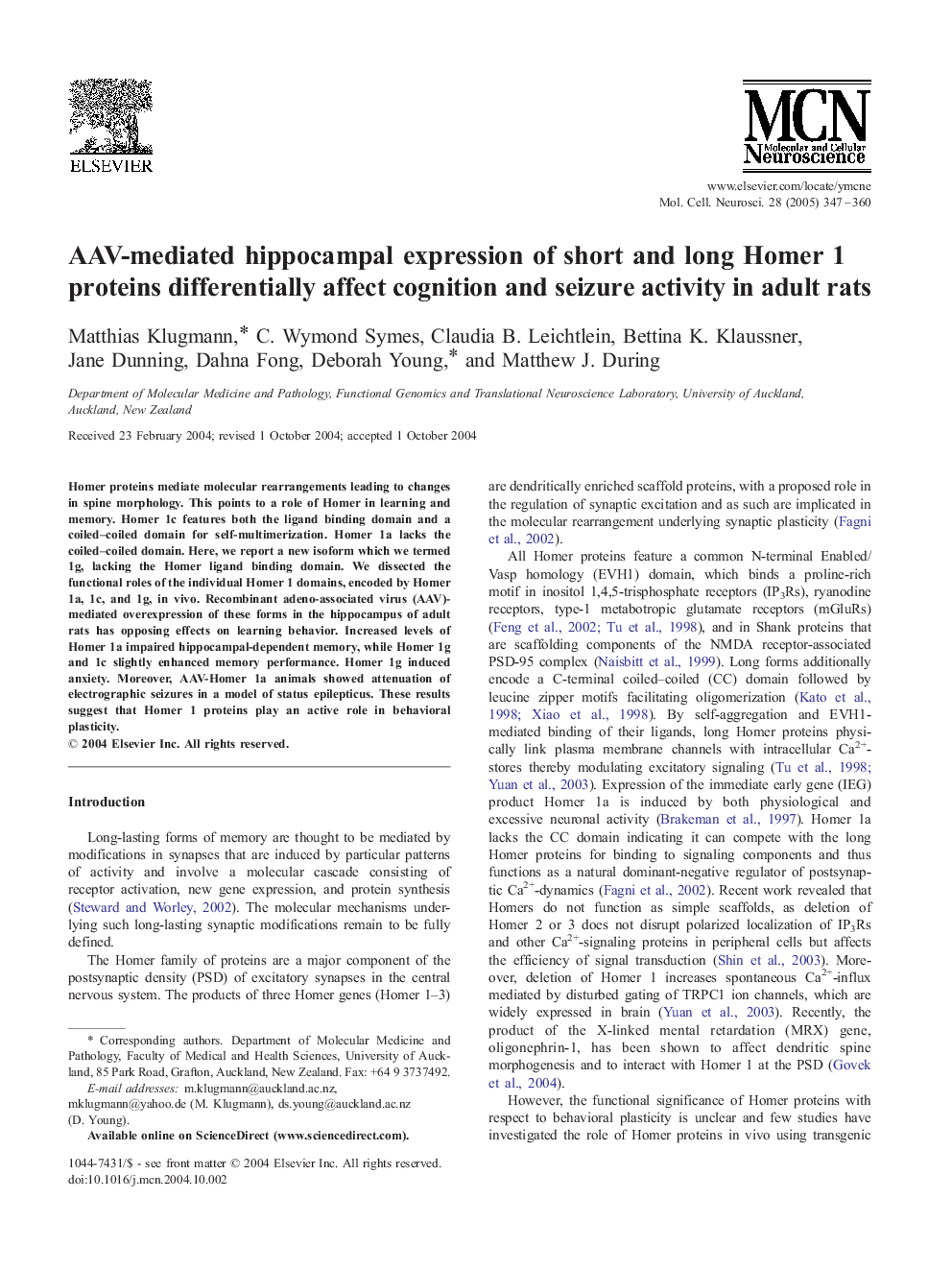| Article ID | Journal | Published Year | Pages | File Type |
|---|---|---|---|---|
| 10956880 | Molecular and Cellular Neuroscience | 2005 | 14 Pages |
Abstract
Homer proteins mediate molecular rearrangements leading to changes in spine morphology. This points to a role of Homer in learning and memory. Homer 1c features both the ligand binding domain and a coiled-coiled domain for self-multimerization. Homer 1a lacks the coiled-coiled domain. Here, we report a new isoform which we termed 1g, lacking the Homer ligand binding domain. We dissected the functional roles of the individual Homer 1 domains, encoded by Homer 1a, 1c, and 1g, in vivo. Recombinant adeno-associated virus (AAV)-mediated overexpression of these forms in the hippocampus of adult rats has opposing effects on learning behavior. Increased levels of Homer 1a impaired hippocampal-dependent memory, while Homer 1g and 1c slightly enhanced memory performance. Homer 1g induced anxiety. Moreover, AAV-Homer 1a animals showed attenuation of electrographic seizures in a model of status epilepticus. These results suggest that Homer 1 proteins play an active role in behavioral plasticity.
Related Topics
Life Sciences
Biochemistry, Genetics and Molecular Biology
Cell Biology
Authors
Matthias Klugmann, C. Wymond Symes, Claudia B. Leichtlein, Bettina K. Klaussner, Jane Dunning, Dahna Fong, Deborah Young, Matthew J. During,
